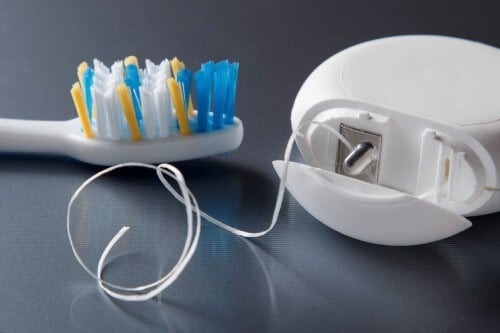Not Just Pulp Fiction: The Truth About Dental Abscesses
What is an Abscess?
An abscess is an infection. There are two types of dental abscesses. A periapical abscess, which happens at the root of a tooth and a periodontal abscess which happens in the gum. A periapical abscess can occur when decay gets into the nerve chamber, killing the nerve and pulp tissue. Sometimes a traumatic injury or crack in a tooth can damage the delicate nerve inside, resulting in the death of the nerve. Periodontal disease is a chronic gum infection that can weaken the bone and may result in bone and tooth loss if untreated. It can also trigger widespread infection throughout the mouth. Regardless of where in the mouth the infection occurs, if it goes untreated for too long, a pus-filled area forms and that is called the abscess.
What are the Symptoms?

Symptoms of an abscess include:
- Severe pain and a throbbing toothache that can radiate to the jawbone, neck, or ear
- Hot or cold tooth sensitivity that lingers
- Pressure sensitivity
- Fever
- Facial swelling
- Bad breath
- Soreness in your neck and jaw from swollen lymph nodes
- Rotten or sour taste in your mouth
It’s important to mention that sometimes an abscess causes no pain, or sometimes the pain goes away suddenly. The discomfort of a toothache is usually caused by the buildup of fluid or gases inside the tooth as the nerve dies. Sometimes the infection works its way into the gum, creating a bubble on the gum. Once this bubble pops, the infection begins to drain into the gum tissue and mouth, and the pain goes away. This doesn’t mean that the infection is getting better, it just means the pressure is relieved.
Treatment

Once an abscess has been diagnosed, there are a few methods of treatment. Antibiotics can be prescribed to destroy the bacteria, but the central issue of an infected tooth, dying nerve, or periodontal disease must still be dealt with.
If your abscess is due to a dying nerve, a root canal may be recommended to clean out the infected tissue, shape the canals and place a rubber-like material in the canals to seal them. A crown or cap might be put over the tooth to help preserve the remaining tooth and prevent further breakage.
If the infection has gone too far and affected the root of the tooth, an extraction might be suggested, and an implant with a crown on top may be put in its place.
If your abscess is due to periodontal disease, root planing and scaling may be done. This is a deep cleaning done with anesthetic and specialized instruments. Sometimes lasers are used to help sterilize the pocket to help prevent bacteria from reinfecting the area.
Preventing an Abcess
While you can’t always avoid a sudden traumatic impact causing a nerve to die, there are plenty of ways you can prevent decay-related infections and periodontal disease:
Visit your dentist for regular checkups and professional cleanings
Brush and floss your teeth at least twice a day
Replace your toothbrush every three or four months and never, ever share it with anyone
Drink tap water or fluoridated bottled water
Watch your sugar and carbohydrate intake because they are bacteria’s favorite food
Use a mouth rinse before bed so it can sit on your teeth overnight
With a little care, you can help prevent an abscess and periodontal disease before they develop, saving yourself the inconvenience and pain of a toothache and the expense of major treatment.




Please login to publish a comment.
Comments (0)